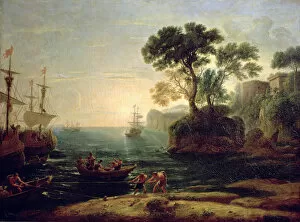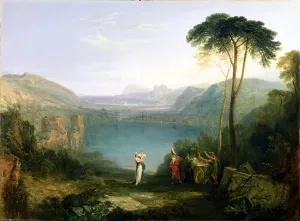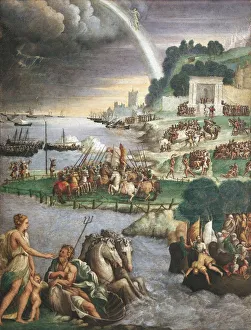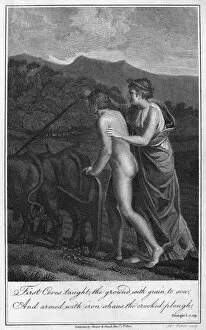Aeneid Collection (page 9)
"Aeneid: A Tale of Heroism and Destiny" In the midst of chaos, as Troy burns to ashes, Aeneas emerges as a symbol of resilience and determination
All Professionally Made to Order for Quick Shipping
"Aeneid: A Tale of Heroism and Destiny" In the midst of chaos, as Troy burns to ashes, Aeneas emerges as a symbol of resilience and determination. The Roman mosaic vividly captures his escape from the ravaged city, showcasing his unwavering spirit. The title page of the epic poem "Aeneid" by Virgil sets the stage for an extraordinary journey through ancient times. This masterpiece has captivated readers for centuries with its gripping narrative and profound themes. Greek art reaches new heights in the Hellenistic era, exemplified by the awe-inspiring statue of Laocoön. Its intricate details depict a moment frozen in time, echoing the trials faced by Aeneas on his quest. Virgil himself becomes intertwined with his creation - "The Aeneid. " As one delves into this literary treasure, they uncover layers of meaning and insight that have shaped Western literature since its inception. An allegorical representation from 4th century BC reveals how deeply ingrained "Aeneid" is within our cultural consciousness. The River Acheron serves as a metaphorical gateway to another realm, mirroring Aeneas' descent into darkness before emerging victorious. The bond between father and son takes center stage as we witness Aeneas carrying Anchises away from Troy's inferno. Francesco Massimiliano Laboureur's sculpture immortalizes their love amidst turmoil, reminding us of familial devotion amid chaos. Within a fresco painting dating back to 1596 lies an iconic scene - Aeneas fleeing burning Troy with Ascanius clutching onto hope beside him. This powerful image encapsulates their desperate flight towards destiny against all odds. Entellus' triumph over a mighty bull showcases not only physical strength but also echoes themes found within "Aeneid. " Just like Entellus conquers adversity in combat, so does our hero overcome countless obstacles on his fated path.


























